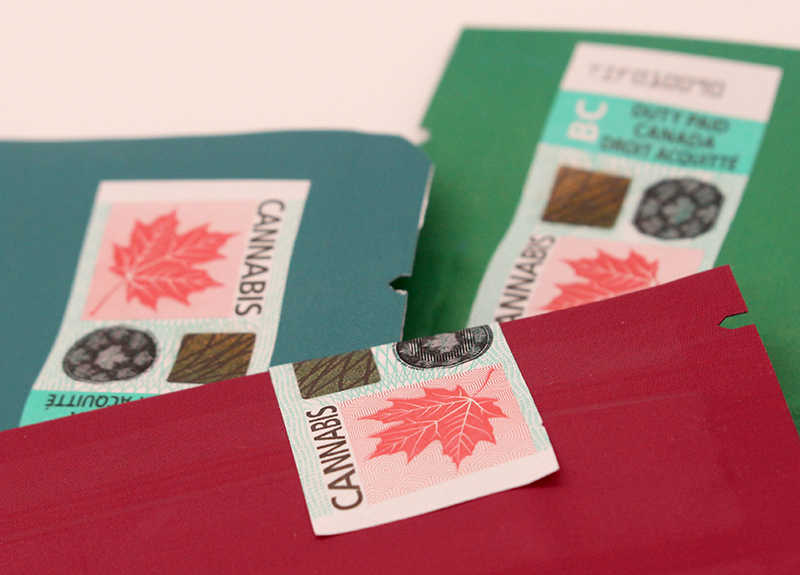Features
How to read a cannabis label: Glossary of terms
Published on January 27, 2023 by David Wylie
 Photo: David Wylie/the oz.
Photo: David Wylie/the oz.
This is part of our ‘How To Read The Label’ series. We decode the language and figures used on Canadian legal cannabis labels to help you better understand the information you’re seeing.
Stories in this series:
- Part 1: A glossary of terms on cannabis labels
- Part 2: How to figure out the amount of THC and CBD
- Part 3: Common terpenes found in cannabis
- Part 4: Minor cannabinoids are emerging
It can be easy to overlook the details on a cannabis label—especially the information found in fine print.
Here is a glossary of info you’ll find on cannabis labels.
Brand name and/or logo. The branding is most often front and centre, just above the product name. But the actual company that makes the product is usually trickier to find, buried in the details on the label. Many products have a parent company, as well as a separate grower. Companies that produce and/or package, sell, and distribute can usually be found listed in smaller print on the label.
Cannabis excise stamp. All regulated cannabis will have a duty-paid stamp—different provinces have different colours. They’re intentionally distinct and tough to counterfeit.
Category of flower. Some flower labels also state whether it’s considered Sativa, Indica, or a Hybrid. Some edible products may also be categorized that way, but it’s not as common as with flower.
Dried cannabis equivalency. On edible labels you’ll find the dried cannabis equivalency. This is especially applicable to those who purchase cannabis products online as you can only order up to the 30-gram limit. Shipping costs can add up.
Expiry date. Typically you’ll see, “no expiry date has been determined” (or no mention at all of an expiry date). Some edible products have best before dates.
Growing and harvesting info. Labels for craft cannabis flower will often use phrases like: “grown in living soil,” “small batch,” “hand trimmed,” “hang dried.” Some companies have even started including the harvest date, which connoisseurs are curious about.
Health Canada’s THC symbol. You can’t miss it—a large stop sign with a pot leaf inside. This is the main identifier that you have a cannabis product. The THC symbol has been routinely spotted on unregulated products too.
Lineage. Usually cannabis flower doesn’t use the actual strain/cultivar in the product name. Some labels show the lineage on the back.
Lot number. If you have problems with what you’ve got, say a jar that arrived empty, the lot number will help you to report any issue to the producer. Labels usually have contact info, like an email and phone number.
Mode of use. Generally, this should be evident but… many labels do point out which products are for inhalation and which are for ingestion.
Nutritional information. Edibles and beverages will have a box with nutritional information, such as calories and sugar, like you see with food products. They’ll also have a list of ingredients and any applicable allergy warnings, i.e., “may contain tree nuts,” etc.
Opening instructions. Most often these will be demonstrated through an illustration, and occasionally there are written instructions as well. This can be helpful with some of the trickier packaging—but sometimes they aren’t clear enough and scissors will be most helpful.
Other cannabinoids. A growing number of products are listing more cannabinoids alongside THC and CBD, such as CBG and CBN.
Packaging date. This will help you determine freshness. Tip: if you buy something on sale, ask at the store about the packaging date before tapping your card.
Product name. These are made up marketing monikers.
Storage instructions. More often than not, these instructions are: “Store in a cool dry place.”
Terpenes. Often the total percentage of terpenes is included on cannabis labels, along with which ones are dominant. More information on terpenes can be found on the oz. here.
THC and CBD levels. All cannabis labels will have THC and CBD levels on them. More information on how to interpret them can be found on the oz. here.
Warning labels. There are a variety of warning labels on cannabis, but they’re not as graphic as those on tobacco, which show things like diseased lungs. Rather, they’re in a plain yellow box. They are applied illogically at random and you can find one clearly meant for edibles on pre-rolls.
Weight. The net weight will be the amount of product inside, i.e., 3.5 grams, 355ml, 1 oz., etc.
—
NB: Not all cannabis labels are created equally when to comes to information. Some are even left intentionally vague.
Leave a comment on our Facebook page.
© Copyright 2023 Okanagan Z. | About the oz.
Report a Typo or Inaccuracy
We strive to avoid typos and inaccuracies. However, on occasion we make mistakes. We value your contributions and help in correcting them.